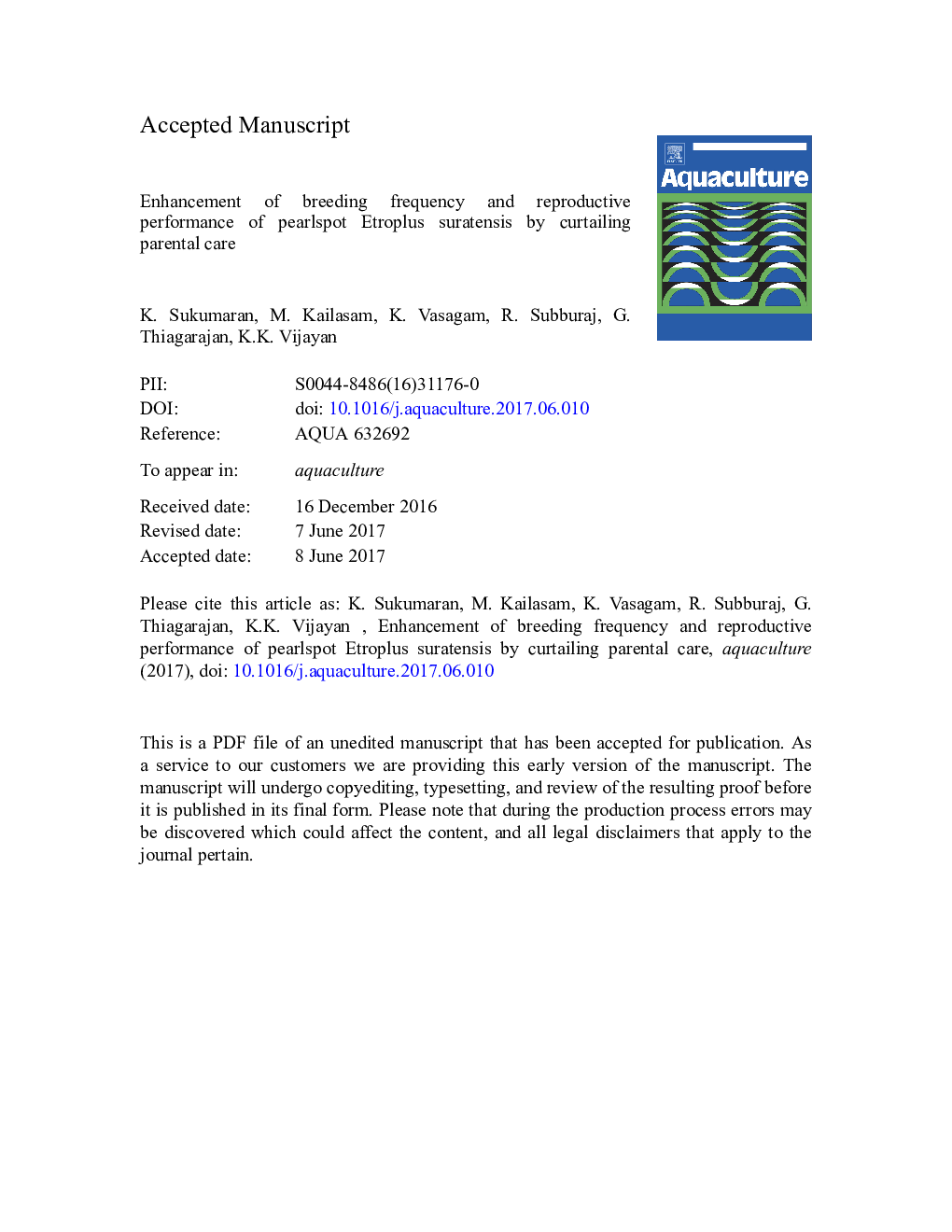| Article ID | Journal | Published Year | Pages | File Type |
|---|---|---|---|---|
| 5539287 | Aquaculture | 2017 | 16 Pages |
Abstract
Increasing the breeding frequency and reproductive performance of pearlspot, Etroplus suratensis in small tank system by manipulating parental care and salinity is reported. A total of 3 experiments were carried out to evaluate the reproductive performance of pearlspot. In the first experiment on breeding of pearlspot involving parental care (without larval separation), production of a single batch of offspring per pair of parent fish (294 larvae, 24-43 fry) was observed after 90 days. Whereas the second experiment on pearlspot breeding by curtailing parental care (with larval separation) demonstrated a higher breeding frequency; 6 in 120 days. The average inter-spawning interval and larval production were 17.6 ± 1.12 days and 1333.3 ± 143.0 respectively. The third experiment was to evaluate the breeding frequency of pearlspot at low (5.40 ± 0.75â°) and high salinity (27.20 ± 0.80â°) by curtailing parental care. The average inter-spawning interval was found to be significantly (p < 0.05) lower (32.14 ± 4.38 days) at low salinity when compared to high salinity (64.37 ± 12.95 days). Similarly, the breeding frequency was also higher at lower salinity in 215 days (5.66 ± 0.66 at low compared to 3.67 ± 0.67 at high salinity). The present study demonstrated that i) curtailing parental care through larval separation can be used to improve the breeding frequency and reproductive performance of pearlspot in captivity ii) relatively lower salinity reduced the inter-spawning interval of pearlspot iii) feasibility of breeding pearlspot in small tank system (1000 L).
Keywords
Related Topics
Life Sciences
Agricultural and Biological Sciences
Aquatic Science
Authors
K. Sukumaran, M. Kailasam, K. Vasagam, R. Subburaj, G. Thiagarajan, K.K. Vijayan,
